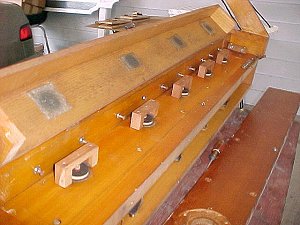
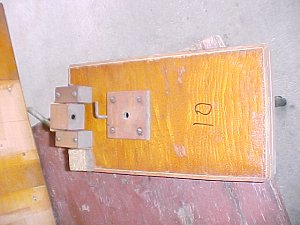
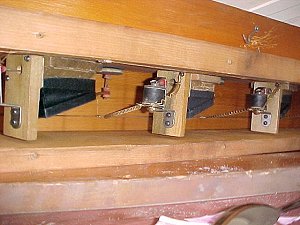
Disks are glued to dowel valve.

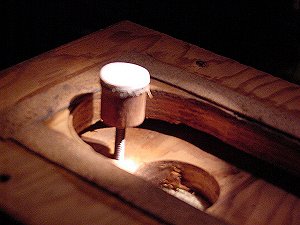
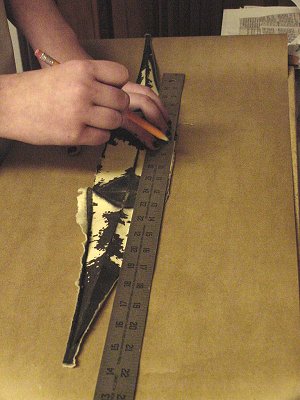
ST. JOSEPH CATHOLIC CHURCH,
Ponchatoula, LA.
Follow John and Rene through their
current repair of Wicks Opus 838.
We begin with the restoration of the swell shade motor.
WEEK 1
(Note: Click on any image to see enlarged photo..)
WEEK 2
WEEK 3
WEEK 4
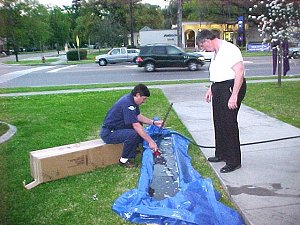 |
Pipe washing begins in preparation for tuning. |
| Metal pipes are soaked in mild detergent, rinsed and stood upright to dry. | 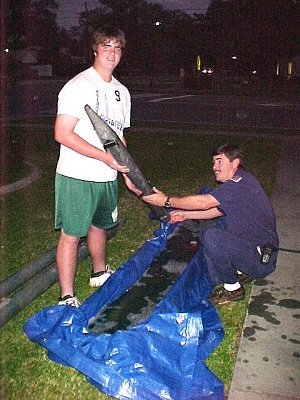 |
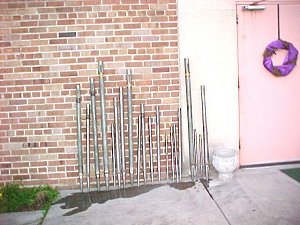 |
String rank dries against front of church building. |
WEEK 5
WEEK 6
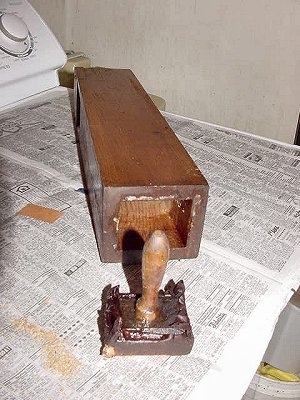 |
After an attempt was made to tune the organ, it was determined that the tibia rank stoppers had rotten leather. As shown at left, someone in the past had added a thin layer of leather over the original felt and leather stopper seals. To properly recondition the rank, it was necessary to completely strip all of the stoppers and apply all new felt and leather.
|
Here is a sample shot of a re-leathered stopper.
Felt is applied and glued first. Then, leather is applied over the felt.
Edges are trimmed with sanding belt. |
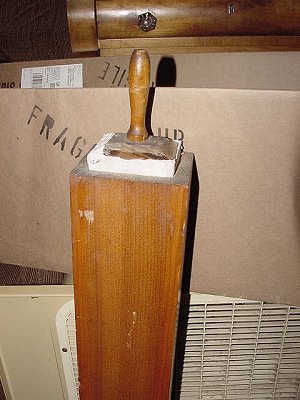 |
 |
Some of the trebble pipes had the tuning handles
missing. Someone had installed wood screws to serve as handles. Here,
new wooden handles were fabricated and installed. |
Easter Sunday 2003, the congregation hears the refurbished
organ for the first time as John DeMajo plays for morning Mass. After
the traditional exit hymn, Mass attendees exited the church to the sounds
of Irving Beriln's "Easter Parade" played in full theatre style.
|
MORE TO FOLLOW.......Phase II begins July 2003